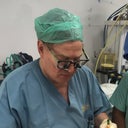Posted underNeck Lift q&a
When having a facelift/neck lift, is local anesthesia the best way? And do you feel any pain?
Answers (16)
From board-certified doctors and trusted medical professionals
Dr. David H. Harley, MD

Dr. David H. Harley, MD
Board Certified Facial Plastic Surgeon
Answer
Dr. Alexander Donath, MD, FACS

Dr. Alexander Donath, MD, FACS
Board Certified Facial Plastic Surgeon
Answer
Dr. Larry Weinstein, MD

Dr. Larry Weinstein, MD
Board Certified Plastic Surgeon
Answer
Dr. Richard A. Bartlett, MD

Dr. Richard A. Bartlett, MD
Board Certified Plastic Surgeon
Answer
Dr. Brian K. Machida, MD, FACS

Dr. Brian K. Machida, MD, FACS
Board Certified Facial Plastic Surgeon
Answer
Dr. Stephen Prendiville, MD

Dr. Stephen Prendiville, MD
Board Certified Facial Plastic Surgeon
Answer
Dr. Zoran Potparic, MD

Dr. Zoran Potparic, MD
Board Certified Plastic Surgeon
Answer
Dr. Thomas J. Walker, MD, FACS

Dr. Thomas J. Walker, MD, FACS
Board Certified Facial Plastic Surgeon
Answer
Dr. Thomas Trevisani, MD

Dr. Thomas Trevisani, MD
Board Certified Plastic Surgeon
Answer
More Neck Lift Questions
See all Neck Lift Q&AWE SEND PRETTY
EMAILS
What’s trending? Who’s turning heads? Which TikTok myths need busting? We’ve got you. No fluff, no gatekeeping—just real talk. Get our free, unfiltered newsletter.
